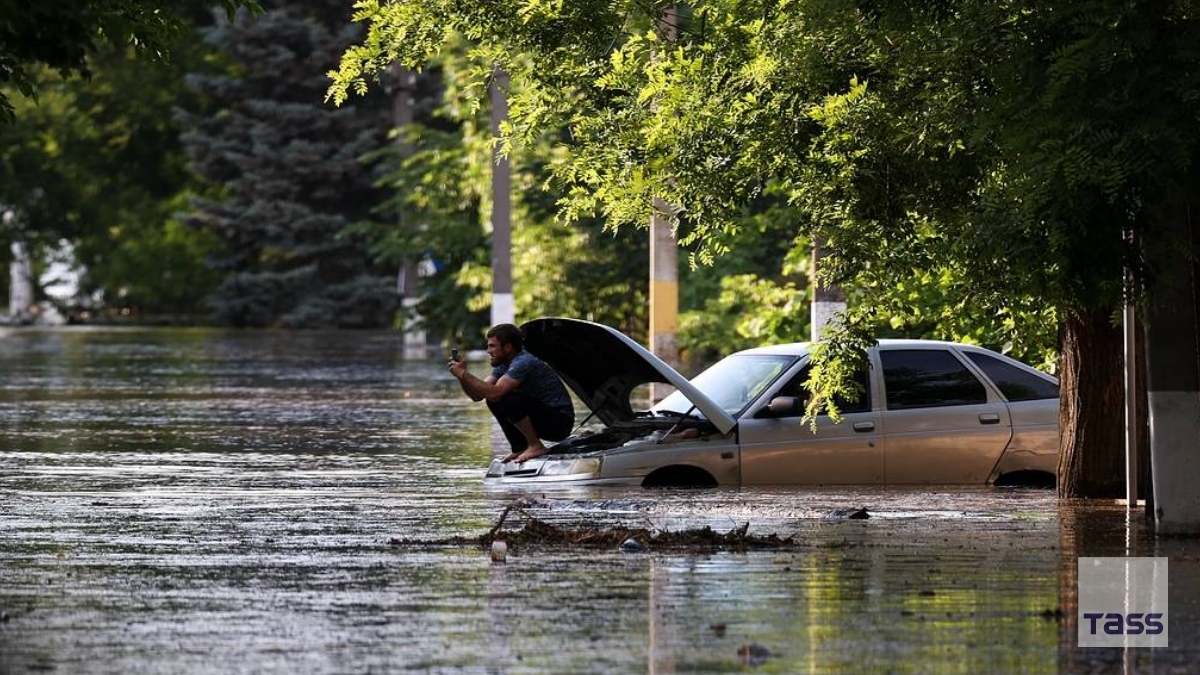As the low-lying areas on either side of the Dnipro River are submerged under floods following the eruption of the Nova Kakhovka dam in southern Ukraine, China seems to have prepared for such a contingency by using a technology it has gained mastery over – drones.
“Threatened” By Chinese Poaching & Russian Acts, US Offers Its Military Pilots ‘Big Bonus’ To Stay In Service
Chinese military and civilian teams rehearsed rescue drills with super-heavy class quadcopter drones in a simulated flood disaster following the “overflowing” of a dam in the Hejiang Garden Expo section in Hezhou City in Guangxi. The drill saw local military-civilian joint flood fighting teams initiating a “multi-subject high intensity” rescue effort.
The exercise aimed to test the “emergency response capabilities of the militia units” of the local military districts, using drones for various purposes like detecting trapped people, dropping relief material, and transporting casualties.
Moreover, indicating an effort toward further integrating the military and private, the People’s Liberation Army (PLA) also reportedly “continued to go deep into local high-tech enterprises to find out more about drones.”
What Is The Flood Rescue Drill Involved?
In a drill practicing a scenario where the rescuers responded to three people who had fallen in the flood waters and were calling for help, the personnel used an Unmanned Aerial Vehicle (UAV) that “sent back a real-time picture.”

“The militia drone unit threw life-saving equipment at the people who fell into the water. The boat rushed to the rescue, and the medical rescue team prepared for admission,” added the report.
The drone carried a lifebuoy in the air, arrived above the person who fell into the water and accurately dropped the lifebuoy. At the same time, a small inflatable boat quickly moved toward the victim, and from about 10 meters away, a rescuer jumped into the water with a rescue rope and swam toward him.
Seeing him holding on to the lifebuoy, other rescuers quickly pulled the rope together to drag the victim into the boat. The medical team then took over the treatment and surgical work in the “safe zone.”
Quadcopter Transports Injured To Safety
It is unclear when the quadcopter was employed to evacuate the injured, simulated by a life-sized dummy/mannequin. But based on the photo and considering a general practice with drone and rescue operations, it must have been used in small clearings around the inundated zone and base camps farther away in the rear, in dry areas.
A drone operator with a heavy-duty body harness (seen from the back) carrying the drone’s remote control equipment is beside the quadcopter, where one mannequin is seated in the cockpit.
The heavy transport drone must be shuttling between such detachments around the flood-affected areas and bigger medical and logistical bases in the rear. Moreover, it must also carry relief material and equipment both ways, where rescue tools required by the frontline teams must be carried from the larger base camp.
This also reveals the diversity of skills required in today’s drone pilots, which include radio communication, coordination, and elements of supply chain management.

UK Military Tested Drones For Battlefield Casualty Evacuation
In July 2021, the British military tested Malloy’s TRV-150 battlefield resupply of blood and ammunition, using six medium-heavy lift UAVs during the Autonomous Advance Force 4.0.
“The drones were tasked with tactically resupplying commandos with everything from ammunition to blood,” said a release from the Royal Navy.
Interestingly, the TRV-150 was accompanied by other unmanned systems, underwater and surface and loitering munitions, that undertook everything from sub-surface scanning for mines to attacking enemy installations like missile and radar sites.
Logistics & Transport Drones Hold Great Promise
Drones like the T-650 and the Chinese quadcopter, even if made semi-autonomous to shuttle between pre-set coordinates, can significantly enhance tactical resupply, logistics, and even medevac activities, reducing the cumulative load of such minor yet critical tasks on ground troops.
India Pitches Light Combat Helicopter ‘LCH Prachand’ To Argentina Years After Its First Chopper Sale Went Bust
Even if they can’t completely replace human soldiers, assigning them a part of the tasks in non-complex and less intense combat situations frees up critical manpower that acts as a force multiplier. Naturally, such primary usage allows for further technical and doctrinal enhancement.
This is not to mention that even if they are vulnerable, their presence presents an additional target to the enemy complicating his battlefield calculus, who might have to choose between engaging the UAVs or other fighting forces.
Lastly, one cannot ignore the biological advantage of absolute fatigue-less capability, which does take a toll on troops, especially in high-intensity combat scenarios.
A single human operator, possibly from the logistics branches of ground armies, can easily control a swarm of drones. While communicating with one another, they can be brought to a remote location, delivering either blood, ammunition, or rations.
Whether the ‘logistic drones’ will positively impact the battlefield and alleviate pressure on manned troops remains to be seen. But they nevertheless hold a promising future if their technology and economics are harmonized.
- The author can be reached at satamp@gmail.com
- Follow EurAsian Times on Google News




